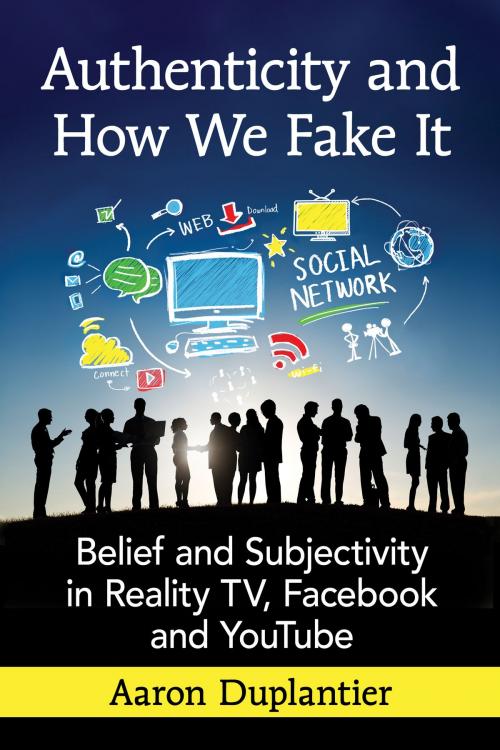Authenticity and How We Fake It
Belief and Subjectivity in Reality TV, Facebook and YouTube
Nonfiction, Entertainment, Television, Performing Arts, Social & Cultural Studies, Social Science, Cultural Studies, Popular Culture| Author: | Aaron Duplantier | ISBN: | 9781476625232 |
| Publisher: | McFarland & Company, Inc., Publishers | Publication: | July 12, 2016 |
| Imprint: | Language: | English |
| Author: | Aaron Duplantier |
| ISBN: | 9781476625232 |
| Publisher: | McFarland & Company, Inc., Publishers |
| Publication: | July 12, 2016 |
| Imprint: | |
| Language: | English |
Consumers today are invested in reality-based media, such as reality television and social media, which in theory draw content from somewhere off-screen in our lived experience. This is seen as more “authentic” than the predominantly fictional media of the latter half of the 20th century. Yet much of reality TV and social media is known by both consumers and creators of content to be scripted or contrived. Addressing this problem deepens consumer engagement, as authenticity becomes a preoccupation driving the extension of a new media ethic of truth and savvy. This dynamic is key to understanding consumers’ changing attitudes about the media they value. Reality TV, Facebook and YouTube have created a paradigm shift in the media landscape. Analyzing these three established platforms—all of which have a stake in the conversation about authenticity—this book sheds light on the complicated behaviors and choices of media consumers.
Consumers today are invested in reality-based media, such as reality television and social media, which in theory draw content from somewhere off-screen in our lived experience. This is seen as more “authentic” than the predominantly fictional media of the latter half of the 20th century. Yet much of reality TV and social media is known by both consumers and creators of content to be scripted or contrived. Addressing this problem deepens consumer engagement, as authenticity becomes a preoccupation driving the extension of a new media ethic of truth and savvy. This dynamic is key to understanding consumers’ changing attitudes about the media they value. Reality TV, Facebook and YouTube have created a paradigm shift in the media landscape. Analyzing these three established platforms—all of which have a stake in the conversation about authenticity—this book sheds light on the complicated behaviors and choices of media consumers.















